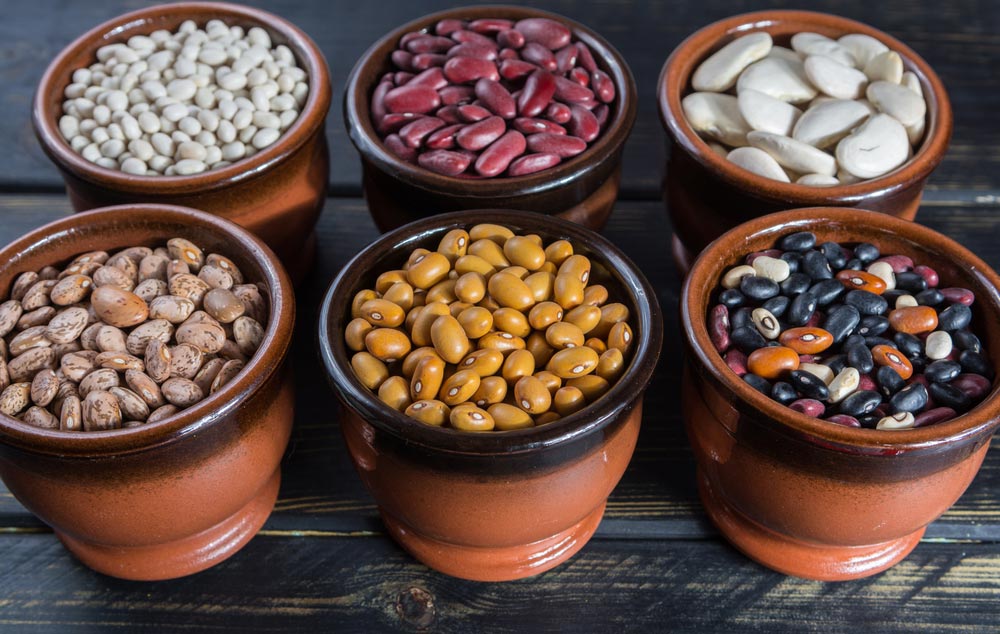Rajma-kidney Bean Health Benefits -2023
Rajma-kidney Bean Health Benefits
Kidney beans, sometimes referred to as Rajma, are a flexible legume that are used in many different types of cuisine all around the world. Rajma is prized for its excellent nutritional profile, many health advantages, and delectable flavour and texture. The Rajma-kidney Bean Health Benefits , the types of kidney beans, the climate needed for their production, their medicinal properties, their use in Ayurveda, and a thorough analysis of their nutrients are all covered in this page.

What are the types of Rajma-kidney Bean?
Kidney beans come in a variety of sizes, colours, and textures. The three most popular types are speckled kidney beans, white kidney beans (sometimes called cannellini beans), and red kidney beans. Indian cuisine primarily uses red kidney beans, particularly in the well-known dish Rajma Chawal.
Which type of Climate is require for Rajma-kidney Bean ?
Kidney beans grow best on warm, well-drained soil in areas with moderate temperatures. They need 60°F to 70°F (15°C to 24°C) for maximum growth, and they are frost-sensitive. A good harvest of kidney beans depends on both moderate rainfall and adequate sunshine.
What are the health advantages of Kidney Rajama beans ?
There are several uses of Kidney bean or Rajama beans . Some of the most common advantages are mentioned below.
Heart Health: Because they lower blood pressure and cholesterol, kidney beans are a great source of fibre and potassium, which support heart health.
Weight control: The high fibre content encourages satiety, which lowers overeating and helps with weight control.
Blood Sugar Control: Kidney beans’ complex carbs release glucose gradually, which regulate the blood sugar .
Follow Our Digiknowledge.co.in Page for Latest update about Bikes, Cars, Sports, , Life style and many more.
Digestive Health: By avoiding constipation and encouraging a healthy gut microbiota, the fibre level also improves digestive health.
Plant-based protein is abundant in kidney beans, which is why they are a crucial part of a vegetarian or vegan diet.
Kidney beans : As red blood cells are produce by kidney beans and preventing iron-deficiency anemia require iron, which is present in them.
The body fights inflammation and oxidative stress included in kidney beans.
Calcium and phosphorus are two minerals that are necessary for strong, healthy bones.
Energy Boost: Rendered beans are a great diet for athletes and anyone who lead active lives since their carbs release energy gradually.
Blood Pressure Regulator: Kidney beans are high in potassium, which lowers the risk of hypertension by helping to regulate blood pressure.

What are the uses of Kidney Rajama beans in Ayurveda ?
Kidney beans are classified as tridoshic, which means they balance the vata, pitta, and kapha doshas and hence encourage general harmony in the body.
Keeps Energy Levels Sustaining: Kidney beans are known in Ayurveda to keep energy levels sustained without resulting in blood sugar rises.
Strengthens Tissues: The nutrients found in kidney beans help to maintain and bolster the body’s tissues.
Enhances Digestive Fire (Agni): According to Ayurveda, kidney beans can improve nutrient absorption and effective digestion by igniting the digestive fire.
Promotes Kidney Function: In spite of their name, kidney beans are said to promote kidney health in Ayurveda, maybe as a result of their balancing qualities.
Promotes Ojas: According to Ayurveda, kidney beans are said to aid in the creation of Ojas, which is the essence of energy.
Kidney beans are said to have anti-inflammatory qualities according to Ayurvedic scriptures, which can help in the treatment of inflammatory diseases.
Supports the Body’s Natural Detoxification Processes: It is said that kidney beans assist the body in getting rid of waste and toxins.
Ayurveda links kidney beans to emotional stability, which promotes mental equilibrium and calmness.
Improves Reproductive Health: Kidney beans are suggested by certain Ayurvedic doctors as a possible aid for hormonal balance and reproductive health.
How to Eat Kidney Beans?
Traditional and contemporary recipes can get all benefit from the use of kidney beans. Salads, chilli, stews, and curries are most common uses of it.. Soak them for the entire night before cooking in order to speed up cooking and improve digestion. Kidney beans in cans are generally used, which is a handy choice for easy dinners.
What are the Nutrients contain in kidney Rajma beans?
Kidney beans are a nutrient-dense food that provide a combination of macronutrients and micronutrients. This is an analysis based on 100 grammes:
Protein: around 8 grammes
Fibre: about seven grammes
20 grammes or so of carbohydrates and Calories About 127 kcal of
Very little fat—roughly 0.5 grammes ,
Vitamins: High concentrations of vitamin K, thiamine, and folate
Minerals: Excellent supply of potassium, magnesium, phosphorus, and iron.
So we can say that Rajma, or kidney beans, are a nutritious powerhouse that offer a host of health advantages. Kidney beans are a wonderful and nutrient-dense complement to any diet, whether they are used in traditional recipes or added to more contemporary, healthful dishes.
Kidney beans support a wholistic approach to health by embracing the knowledge of both traditional culinary traditions and age-old Ayurvedic methods.
What is special about kidney beans?
Protein from plants can be found in abundance in kidney beans. Aside from that, they are abundant in fibre, antioxidants, vitamins, minerals, and other special plant chemicals. These beans may therefore help lower blood sugar, support intestinal health, and facilitate weight loss.
Which kidney beans are best?
White Kidney Beans
What are the disadvantages of rajma?
Digestive discomfort, including diarrhoea, vomiting, and nausea. Rajma provides alpha-galactosides, insoluble fibres that can have negative health effects.




